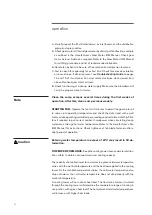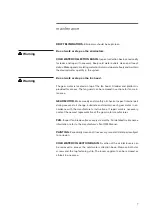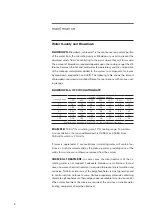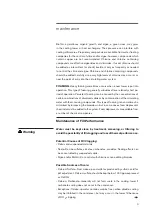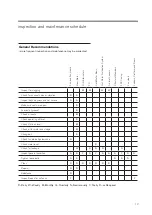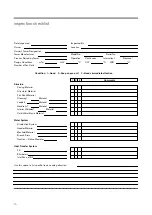
8
Water Quality and Blowdown
BLOWDOWN–Blowdown, or bleed-off, is the continuous removal of a portion
of the water from the circulating system. Blowdown is used to prevent the
dissolved solids from concentrating to the point where they will form scale.
The amount of blowdown required depends upon the cooling range (the dif-
ference between the hot and cold water temperatures) and the composition
of the make-up water (water added to the system to compensate for losses
by blowdown, evaporation and drift). The following table shows the amount
of blowdown required to maintain different concentrations with various cool-
ing ranges:
BLOWDOWN–% OF CIRCULATING RATE
EXAMPLE: 159 m
3
/hr circulating rate, 10°C cooling range. To maintain
4 concentrations, the required blowdown is 0.458% or .00458 times
159 m
3
/hr, which is .73 m
3
/hr.
If tower is operated at 4 concentrations, circulating water will contain four
times as much dissolved solid as the make-up water, providing none of the
solids form scale or are otherwise removed from the system.
CHEMICAL TREATMENT–In some cases chemical treatment of the cir-
culating water is not required if adequate blowdown is maintained. In most
cases, however, chemical treatment is required to prevent scale formation and
corrosion. Sulfuric acid or one of the polyphosphates is most generally used
to control calcium carbonate scale. Various proprietary materials containing
chromates, phosphates or other compounds are available for corrosion control.
When water treatment chemicals are required, the services of reliable water
treating companies should be obtained.
maintenance
Cooling Range
Number of Concentrations
1.5X
2.0X
2.5X
3.0X
4.0X
5.0X
6.0X
3ºC
.78
.38
.25
.18
.11
.08
.06
6ºC
1.58
.78
.51
.38
.25
.18
.14
8ºC
2.38
1.18
.78
.58
.38
.28
.22
11ºC
3.18
1.58
1.05
.78
.51
.38
.30
14ºC
3.98
1.98
1.32
.98
.64
.48
.38
Multipliers are based on drift of 0.02% of the circulating water rate.




